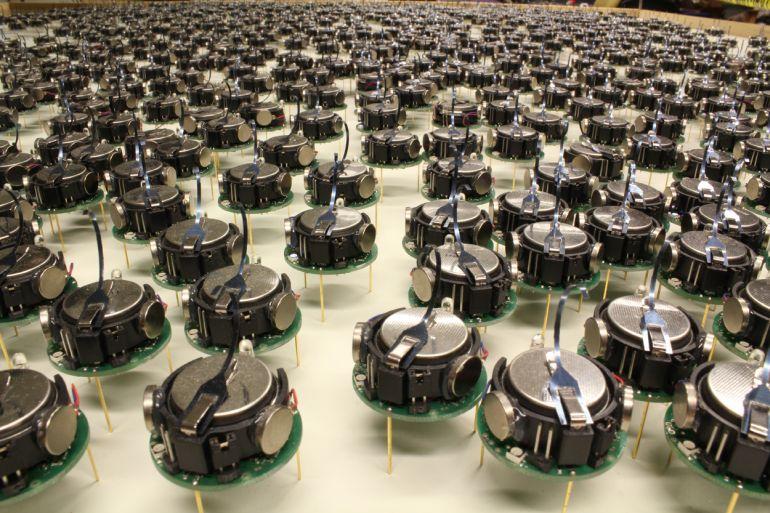Kilobots: a self-organizing system of 1024 mini-robots

Back in 2011, a small note appeared on Habré about mini-robots that can work quite well together (under the strict guidance of a team of researchers from Harvard). Developers are exploring on these miniature robots the possibility of creating serious self-organizing systems that can perform useful tasks (studying environmental conditions, removing harmful substances, exploring territories after natural and man-made disasters).
Previously, the system showed good results, but developers could control 10-100 robots at the same time, no more. Now the team has achieved yet another success: more than 1000 robots have managed to organize themselves, to be precise, then 1024. The robots themselves are called Kilobots (in fact, everything is logical).
Each of the robots is a device with a diameter of about 3 centimeters, which is powered by a 3.4V battery. Robots have three rigidly fixed legs with two vibration motors between the legs (the legs do not move, the movement is due to the motors).
Between themselves, robots communicate through infrared signals, which are perceived by all the closest neighbors of the robot that emitted the signal. The behavior of these devices is somewhat similar to the behavior of ants: scientists were even able to achieve the dragging of large objects by a group of such robots. I think everyone saw how the ants carry a large caterpillar: at first the chaotic movement, where everyone pulls in his own direction, turns into a purposeful movement in the direction of the anthill. It is the same with robots - in a couple of minutes they “understand” what needs to be carried and where, and drag their burden, showing rather effective results.
According to the developers, the behavioral model of robots is limited to four types of commands: grouping, forming a gradient, calculating the distance from the starting point and localization. In addition, each microrobot monitors the position of its closest neighbors - this is done so that the robots do not form a "bunch of small," bumping and turning each other.
Now 1024 robots, as shown above, can create any complex figure specified by the operator. The basis of the system is always several microrobots (4 units) indicating the starting point of the construction, and all other robots are grouped around a single center.
Via + cnet
